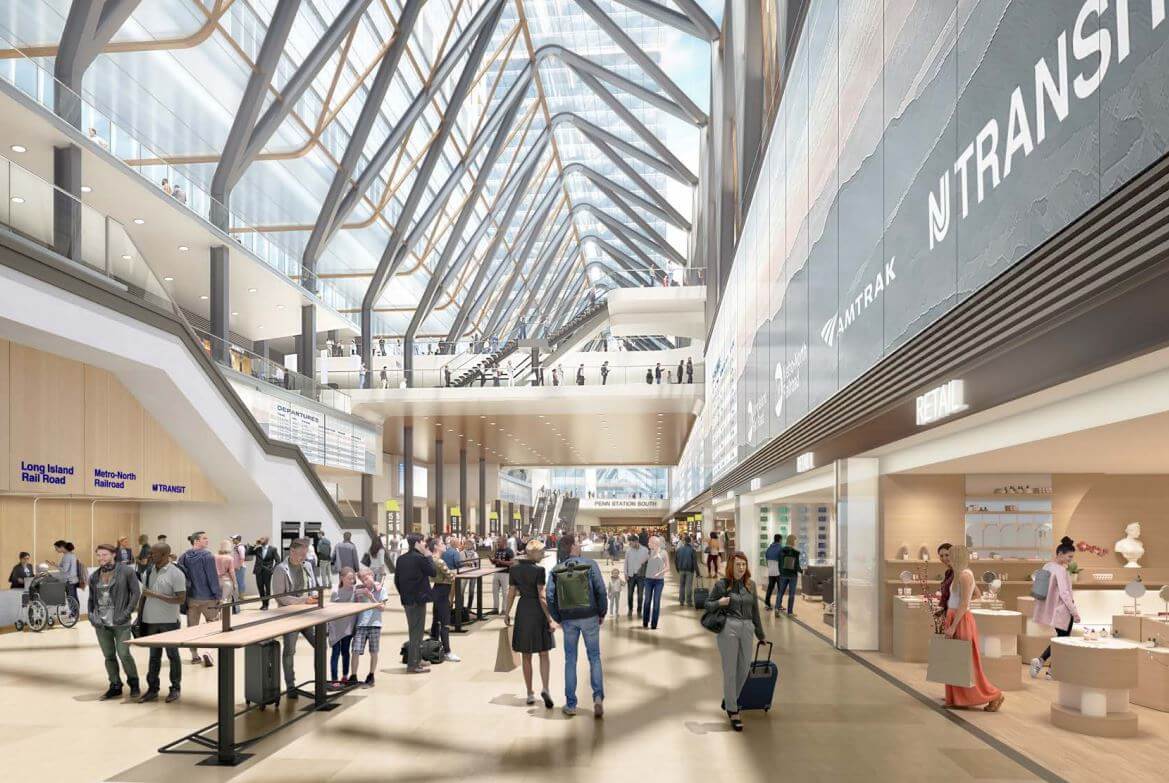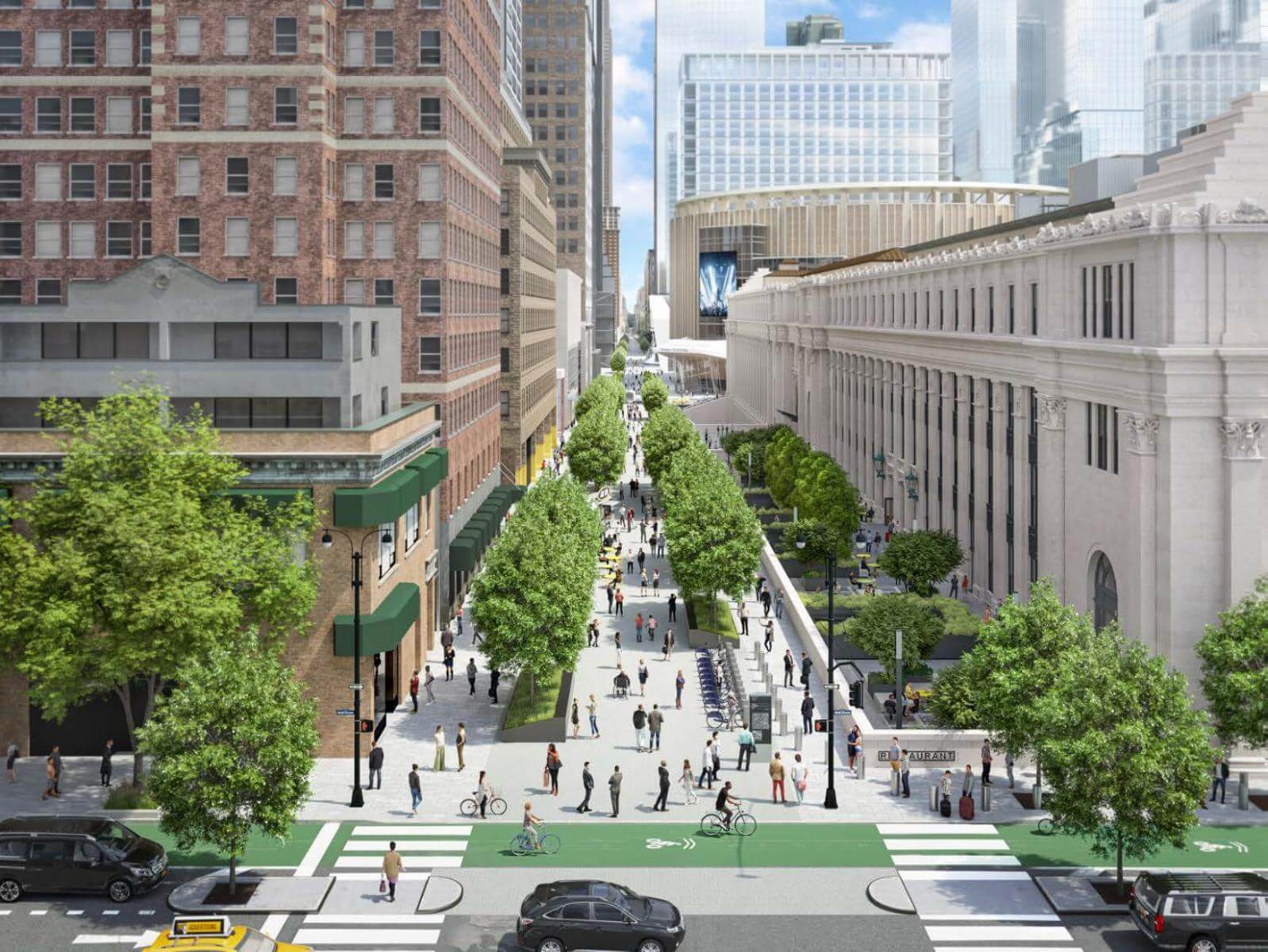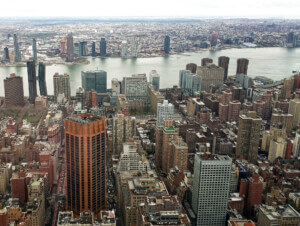The saga surrounding the redevelopment of Pennsylvania Station and its peripheries moved, slightly, forward yesterday when New York’s economic development agency, the Empire State Development (ESD), unanimously voted in favor of the Midtown Manhattan megaproject. In its current iteration—a version pared back late last year when Governor Kathy Hochul took office—the still-ambitious scheme will comprise up to 18 million square feet, with eight plots slated for redevelopment.
Under the approved plan most of the new constructions in the so-called Empire Station Complex will be dedicated to commercial space, including offices and retail, spread across 10 skyscrapers to form an office-centric neighborhood on par with nearby Hudson Yards. The plan also includes 1,800 housing units, a hotel, and a long-overdue renovation to Penn Station, recently dubbed a “hellhole” by Hochul.
For decades the project has been subject to outcries over redevelopment—and overdevelopment—that disturbs the area’s history and fabric. It began in 1963 when the original Pennsylvania Station was demolished to construct the rounded entertainment complex Madison Square Garden.

The proposed reconstruction of Penn Station will include cosmetic upgrades, the reconfiguration of the train hall serving NJ Transit and Long Island Rail Road, subway improvements, and the construction of a rail tunnel under the Hudson River, all estimated to cost $7 billion, with the surrounding redevelopment proposal increasing the cost another $13 billion. The proposed design would connect to the Moynihan Train Hall, opened in 2021.
Other improvements to the immediate environment, assumed with its completion, would bring the bill up an additional $2 billion.
With the ESD’s approval an application can now be made for federal funding to assist with the costs of the project’s development. However, who will dish out the money for the megaproject is still not confirmed. Hochul reported to the Wall Street Journal that financial details and terms concerning the project will not be disclosed until “negotiations” occur with both the federal government and developers. The ESD has not released a Request for Proposals (RFP) for the larger design scheme; last month the State formally commenced an RFP seeking architecture and engineering firms to execute the outlined design work at Penn Station.
The plan calls for offering $1.2 billion in tax breaks for the project developers. Currently, real estate development giant Vornado Realty Trust owns five of the properties tagged for redevelopment, including the Hotel Pennsylvania, a 1919 design from McKim, Meade & White, located across from the train station. Despite robust preservation efforts to save the building, demolition work at the historic former hospitality venue began earlier this year to make way for Vornado’s Foster + Partners-designed PENN15 supertall office tower.

Before any checks can be written out and signed, the proposal must be approved by the Public Authorities Control Board, a state body responsible for reviewing and granting financial and construction approval to applications from statewide public authorities. The proposal is scheduled as an agenda item up for review and vote at the Board’s upcoming meeting on July 27.
On a similar note, New York State Senate bill 6556, introduced in June 2021, also weighs on the project’s future. The bill asks that the Empire Station Complex project and the Empire Penn Expansion undergo the city’s Uniform Land Use Review Procedure (ULURP), just as other large-scale capital projects are, presently the proposed redevelopment is exempt from ULURP review. The Senate law is still in committee, after it is discussed on the floor it must also pass through the Senate and Assembly before final approval (or disapproval) by the Governor. With this formal review the proposal would be brought to the attention of City Council, who would hold public hearings to gather insight from community stakeholders concerning the impacts, both beneficial and detrimental, should the project be fully realized.
While yesterday’s approval feels like a victory, the project still has a long road ahead before the ground is broken and any shiny glass towers are constructed.











